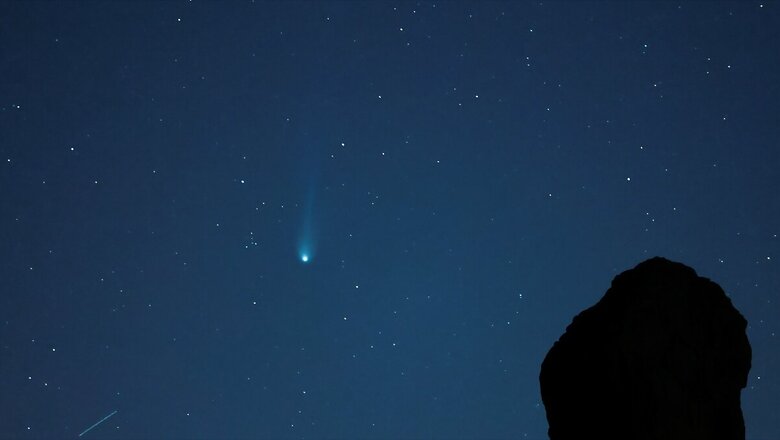
views
Scientists have warned that a rare naked-eye comet may disintegrate before it reaches its closest point to the Sun, according to a recent study. Causing a buzz among stargazers, Comet Tsuchinshan-ATLAS could be on the brink of collapse.
It is a long-period comet with an orbit that takes it around the Sun once every 80,000 years. Comet Tsuchinshan-ATLAS was discovered in January 2023 by China’s Purple Mountain Observatory and later identified by the Asteroid Terrestrial-impact Last Alert System (ATLAS) in South Africa.
It is currently in the constellation Leo and is expected to become visible in the night sky in the coming months. Astronomers had anticipated that the comet would brighten as it approached its perihelion, the closest point to the Sun, expected on September 27. According to a report published in Forbes, the comet’s proximity to the Sun — much closer than half the Earth-Sun distance — was projected to make it an impressive sight, potentially as bright as Venus.
However, a recent study led by Czech-American astronomer Zdeněk Sekanina suggests that the comet may not reach its expected brightness. The study indicates that Comet Tsuchinshan-ATLAS is at risk of disintegrating before it reaches perihelion. Sekanina’s research points to several signs of impending collapse, including the comet’s failure to brighten as much as similar comets from the Oort Cloud and the appearance of a fragmented nucleus and unusually narrow tail.
The comet’s potential disintegration is attributed to the intense heat and gravitational forces experienced as it nears the Sun. Sekanina’s study reveals that the comet is shedding “dark, porous blobs” and has entered a stage of fragmentation. Despite these concerns, some experts remain hopeful. Nick James, director of the Comet Section of the British Astronomical Association, suggests that while the comet appears to be fragmenting, it is not necessarily doomed.



















Comments
0 comment